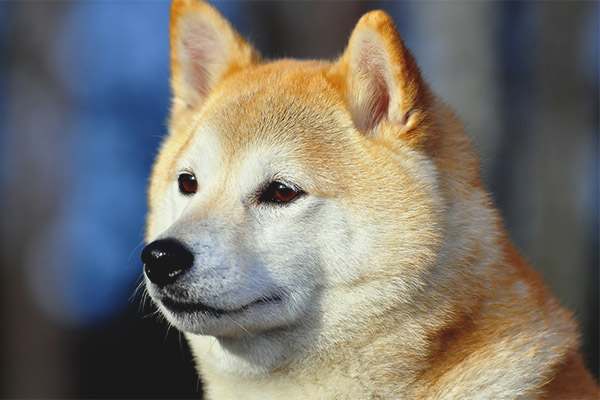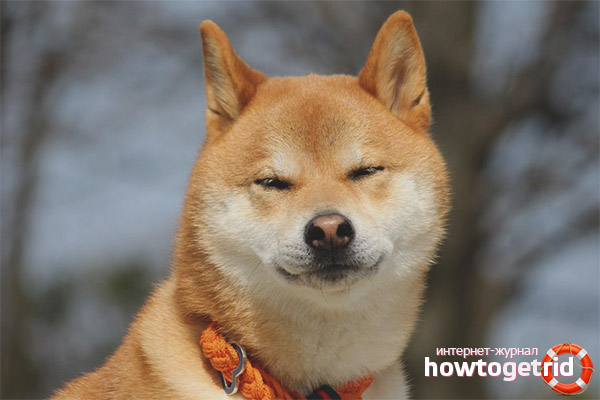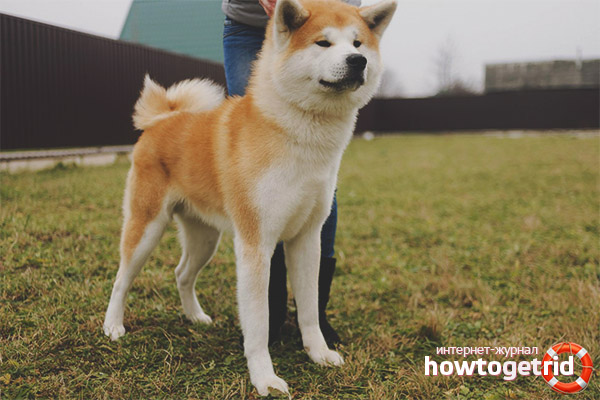The content of the article
Experienced dog breeders and fans probably remembered the movie “Hachiko”, that was the name of the Akita Inu dog. Even from the film, one can conclude how loyal pets are, sensual, possessing infinite love for their owner.
Historical summary
- Historical note states that the breed is considered the oldest among their own kind. The dogs were bred in Japan, for a long time the specialists considered the origin of Akita Inu and could not find reliable data. But as a result of the archaeological excavations, it was possible to find drawings depicting dogs similar to the furry friends in question. Since then, more than four thousand years have passed.
- For Russian people, the name of the breed may seem strange and exotic.But the Japanese are not surprised by this, because from their Akita Inu language is translated as a dog from Akita province, which is located on the island of Honshu. External breed data was described in the 17th century, since no adjustments have been made. The dog remained as it was created by nature itself.
- According to some data, individuals of the represented breed are considered to be the closest relatives of wolves. No one has denied this information, but there is no special evidence either. Believe it or not, the case is purely individual. But there is some truth, if you consider how old breed.
- At first, the dogs were kept exclusively in peasant families to protect the premises. Then they moved to wealthy houses, aristocrats appreciated the pedigree characteristics of pets. For some time there was even a law that said that every offender of dogs of this breed would be severely punished.
- Akita value is not only in external data or character. Dogs are pure-blood in nature, they were bred without crossing with other breeds. At the end of the 19th century an organization was created to protect the pristine nature of the breed.Connoisseurs tried their best to leave the Akita Inu the way it is.
- When World War II began, the dogs stopped breeding. Most of the individuals went to the service, in Japan, a small number of Akita Inu representatives remained. However, after the end of the war, the breed was able to recover and develop even more.
Species
- If earlier dogs were not crossed with anyone, then in the middle of the 20th century these manipulations diverged in full force. Akita Inu began to cross with the German Shepherd, as a result, managed to get several subspecies: fighting, hunting, shepherd.
- Over time, dog handlers took up the old, wanting to revive the original characteristics. Today, representatives of the breed are divided into 4 species, which differ in color.
- Akita Inu American is a large individual, which is distinguished by its massive body composition and developed muscular part. The tiger variety of dogs is distinguished in three colors: red, white and black.
- There is also an Akita Inu white, by name it can be understood that the main color of the wool is snow-white.The red variety is distinguished from other red woolen cover, markings on the muzzle, abdominal part and paws.
Generally accepted standards
It may seem to some that the appearance of the breed is simple. However, if you take a closer look at the individuals, it can be noted that intelligence and interest stand out in the slanting eyes, and a certain charm is noted in the physique.
If we consider the external features in all details, the pets of this breed are strong, harmoniously folded, muscular. The backbone is heavy and dense, the muscles are developed.
The generally accepted standards include the following characteristics:
- The head in its shape resembles a triangle, the format is dull, the skull is wide. The eyes are spaced at an average distance, between them is looked through the hole.
- Nose large format, pigmented black or brownish. A white Akita inu may have a different shade. The eyes do not protrude, have an average size and a brownish iris. Set on normally.
- The neck is short, the suspension is minimal. Powerful in its build, short, which gives the appearance of some zest.The ears are rounded at the edges, standing, when compared with the overall size of the head are small.
- The back is flat, muscular, the loin is well developed. The chest is wide, deep, developed. The tail is large and set high, twisted in format, pressed against the thigh or back. The dog is well wielding the tail, so that he curls at the end or straightens and is located along the back.
- The skin of an Akita Inu is not pressed too tightly, folds may be observed in some places. The coat is thick, rough, not knocked off with mats. The length reaches about 5-6 cm. The undercoat is present, but it is soft, with an oily impregnation to protect against water.
- The limbs are powerful, the hind legs are wider than the front ones. The pads are fleshy and dense, resemble a cat.
- The coat color is important. We mentioned all the varieties earlier. The main condition is that the dog must have a clear pattern without blurry outlines. In some cases, the shade of the undercoat on the tone does not coincide with the guard hair.
- With regard to growth at withers, the figures vary in the range of 61-65 cm. (Females), 66-70 cm. (Males).In the weight category, females make up 20-30 kg., Males are slightly larger, their weight can reach 30-40 kg.
Breed character
- Since the breed belongs to the Japanese, the represented individuals have absorbed all the eastern features of temperament. The dog can be called restrained, indifferent to outsiders, in some respects alert. But when communicating with the owner or the household, the animal becomes joyful and sociable.
- Dogs can be called active, so they need an owner with the same temperament. A pet needs walking on the street, jogging. Even when the dog is old, it will still want to play with the owner and will show interest in every way.
- The main feature of the Akita Inu is that the breed under discussion is very true. The dog feels good owner, can be with him for hours, quickly attached to the owner.
- Eastern temperament says that dogs are quite stubborn. It may seem to some that Akita Inu are difficult to train. The main thing is not to swear, have patience.
- A dog needs an owner with a firm hand, but a soft heart.It is important to keep the animal not in strictness, but to bring up moderately, alternating the carrot with the whip.
- Akita by nature like to dominate others, therefore, they treat others' animals with suspicion and anger. If animals grew up together, then there should be no communication problems. Individuals of the breed must be socialized early in order to eliminate anger.
- Japanese dogs give birth to families with children, because Akita can get along with the child and indulge in all his pranks. But it is worth being careful, because in a rush of games a pet can harm a baby.
Peculiarities of care
- Dogs feel good not only on the street, but also in the apartment. If you have plans for content in the yard, then for the winter, build a warmed pet for your pet.
- Do not discount the fact that akits are active. You need to walk twice a day for 1.5-2 hours. Otherwise, the animal will begin to be entertained at home, which is unlikely to please the owner.
- Animals of this breed are prone to gaining excess weight. Therefore it is necessary to take care of physical activity. Download Akita work and watch the food.
- Wool cover rolls into mats, but rarely. Scrubbing is done twice a week. When the molt begins, the dog must be combed every day several times.
- Remember that you can not bathe pets with frequent intervals. From this depends directly on the state of the skin and coat. It is enough to carry out washing once in 3-5 months. After washing, the wool is dried with a towel or hair dryer.
Training
- Raising a puppy is not much different from raising a young child. Have patience and always keep yourself in hand. The animal does not deserve aggression from the owner. If a person has mental health problems, the pet should not suffer. Come to education with full responsibility.
- Be tactful and patient. As a result, you will achieve successful training. The problem is that the Akita matures slowly. Because of this, there may be problems with training. You have to have iron patience and have plenty of time. Training should be phased and smooth. Do not hurry anywhere.
- If you ignore simple instructions, you simply cannot achieve the desired result.Be sure to start training with your puppy age. Always be prepared for the fact that the puppy will not regularly obey you. The pet is rather stubborn, capricious and has a difficult character. Such dogs are proud.
- If you have not previously engaged in the education of dogs, there may be difficulties of a certain nature. In this case, it is strongly recommended to seek help from a dog handler. A professional will help you to go through the main stages of raising an animal. Experienced dog handlers will teach you how to behave with a dog.
- It is strictly forbidden to show excessive pressure and rudeness to the breed in question. Otherwise, you can injure the psyche of the dog, and it closes in itself. Also, a pet may simply refuse to execute commands or do them incorrectly, slowly.
- To achieve successful results in the education of Akita, a pet must be given affection. In addition, you must observe consistency, be flexible and firm. From puppyhood you must show individuals that you are the owner and the main one in the pack. Also, the dog must understand that you are her friend.
- In addition, a dog from an early age should be taught to treat all family members correctly. Also, the pet should not unreasonably show aggression towards others and strangers. Do not undermine the Akita at home. The pet should feel like a full member of the family. Do not allow her anything extra.
- If you understand everything, then with the education of special problems will not arise. With Akita, the method of education with encouragement works very well. As soon as the dog correctly executes the command, be sure to treat it with a treat and stroke. This breed is very well developed protective qualities. Akita act as bodyguards.
- Separately, it is worth mentioning that, as soon as a pet is over 2 years old, it becomes completely independent. The dog is forming its own opinion. At this age, to train an animal is very difficult. Therefore, it is strongly recommended to engage in similar procedures in puppy age.
Choosing a puppy
- If you want to buy a purebred puppy and not stumble upon unscrupulous breeders, it is strongly recommended to contact the club where such dogs are bred.A professional club must be recognized by the ICE (International Cynological Organization).
- Try to choose a puppy from a small litter. In this case, all individuals will be of medium size. Be sure to ask the breeder to show you the pedigree of the puppy. Ask if parents have prizes and certificates. Also, the breeder should talk about possible genetic allergies and diseases.
- It is not necessary to take a puppy whose parents could be relatives. Such a dog may have various pathologies. If you approximately want to know about the psychological portrait of a puppy, be sure to take a look at its parents. If possible, stroke them, aggression should not be.
- If the puppy does not have any health problems, then he will be active. A completely healthy dog has a playful character, smooth hair, shining eyes and clean ears. Remember, from a puppy should not smell bad. Claws and teeth must be kept intact and undamaged.
- Among other things, be sure to pay attention to how the puppy will react to you for the first time. He should see you as a potential owner.If the pet shows contact, curiosity and the desire to play with you, then he is ready for a new family. If you decide to buy a dog for the championship or production, be sure to ask for help from a professional canine.
Pros and cons of breed
- Pros. The undoubted advantage of this breed is considered unshakable loyalty. Akits also have a sharp mind. In terms of content you will not have much difficulty. Dogs are very restrained and calm, they do not bark without a reason.
- Minuses. At the genetic level, dominant nature is characteristic of the Akita, they do not get along well with other representatives of dogs. The individuals in question are difficult and need to be trained for a long time. At puppy age, Akita is too active.
Diseases
- Almost every dog breed has its own diseases. Hip dysplasia can be inherited by the Akitas. Consider, if you have got a dog for breeding or selection, before the 2nd age you need to undergo a radiographic examination with it.
- If everything is in order, the dog must write a special certificate of the absence of genetic pathology. Otherwise, the individual will not be suitable for breeding.In addition, Akita is not all. They have a few more diseases.
- Dogs are prone to hypothyroidism. This pathology is accompanied by a malfunction of the thyroid gland. As a result, skin diseases develop. In addition, Akita has congenital diseases associated with the eyes. A puppy may have hereditary vision problems. Therefore, it is better to choose a pet with a dog handler.
Today we reviewed all the important characteristics of the breed. You can make for yourself certain conclusions on the content, as well as decide whether or not to have a pet. Akita Inu is a popular breed that it makes sense to look at in detail.
Video: Akita Inu dog breed















To send